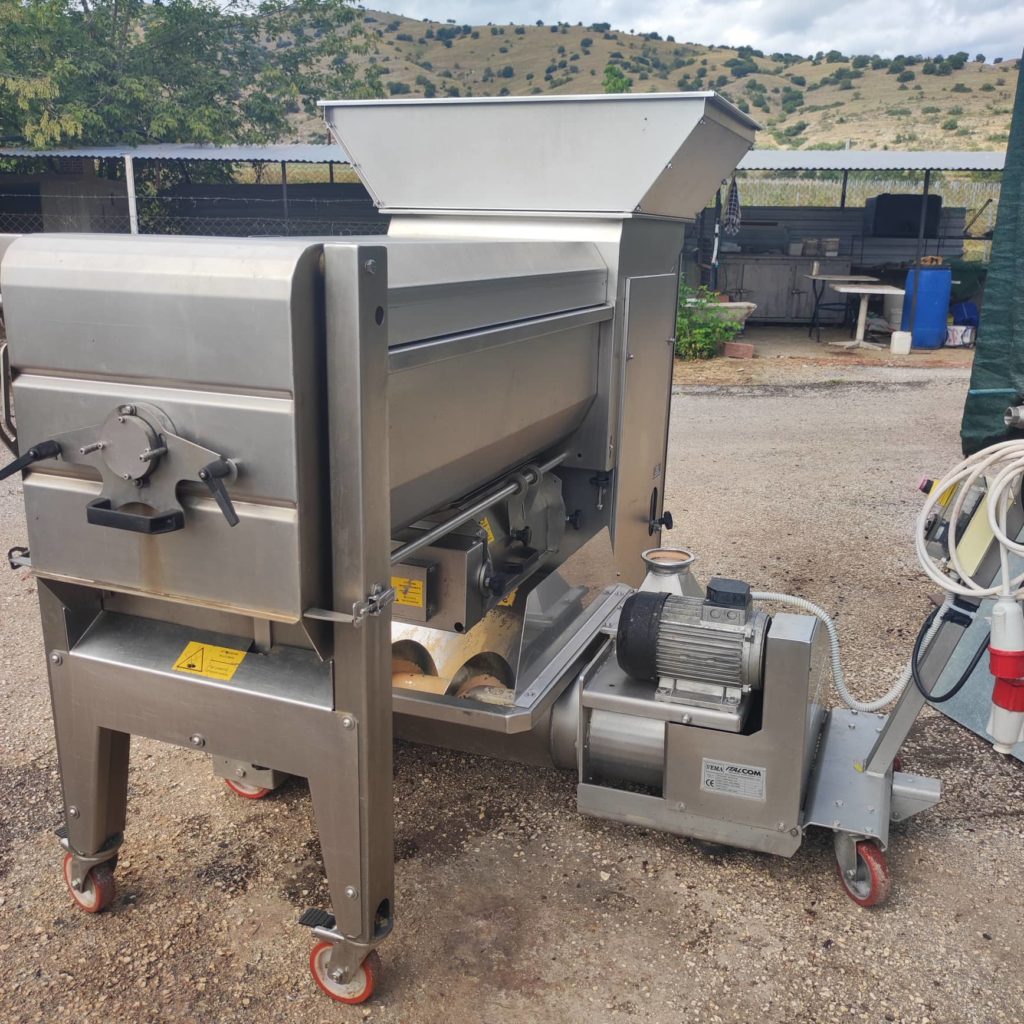White Wine Vinification

This post is also available in:
This post is also available in:
![]() Español (Spanish)
Español (Spanish) ![]() Français (French)
Français (French) ![]() Deutsch (German)
Deutsch (German) ![]() हिन्दी (Hindi)
हिन्दी (Hindi) ![]() العربية (Arabic)
العربية (Arabic) ![]() 简体中文 (Chinese (Simplified))
简体中文 (Chinese (Simplified)) ![]() Ελληνικά (Greek)
Ελληνικά (Greek) ![]() Português (Portuguese (Brazil))
Português (Portuguese (Brazil))
In white wine vinification – in contrast to red – alcoholic fermentation takes place in the absence of grape skins. The main characteristics of white winemaking are the absence of extraction during alcoholic fermentation and the separation of must into fractions. The most important parameter for producing white wines is that the fermentation occurs at a temperature of 16-20 ºC.
The stages of white winemaking are presented below.
- Harvest
The harvest must be done at the appropriate level of technological ripeness of the grapes. Technological ripeness is defined when the sugar/acid ratio is the desired one for the production of each wine, so it is defined as the time of the harvest. Depending on the ripeness of the grapes, the produced wine is expected to have differences in its organoleptic properties. If the harvest takes place earlier than the projected time, the final product is predicted to have a harsher taste, as the complex compounds of the grape will not have fully developed.
- Grape crushing
During white vinification, the grape berries are crushed and destemmed. Their breaking takes place in the grape crusher destemmer.

Image 1. Grape crusher destemmer (Elassona Winery)
- Pressing
Then, the press carries out the pressing of the grape berries. Various types of presses are used in wineries, such as vertical basket press, horizontal screw press, and continuous screw press, but almost all of them use pneumatic membrane presses. The pressure is exerted thanks to the expansion of an elastic rubber membrane, located inside the press. The grape juice must flow through the holes and then be collected at the press’s bottom.

Image 2. Pneumatic Wine Press (Ellasona Winery).
- Settling
The settling has the purpose of removing the solid particles that are suspended in the must giving the wine a grassy smell. It is also necessary for the quality improvement of the wines. Wines with greater freshness, higher acidity, and a paler color are more stable and less sensitive to oxidation (Soufleros, 1997).
The settling is done either statically or dynamically. The most common method of sludge removal is static. This method removes almost all particles with a diameter greater than 0.2 mm. The wort rests for 12-14 hours and then it is transferred. Also, adding SO2 and chilling for 12-24 hours can take place. Cooling the wort facilitates the separation’s success because it slows the start of alcoholic fermentation. In addition, pectinolytic enzymes can be used to destroy the pectin compounds that participate in the colloidal state of the must and make it difficult for the solid components to settle.
Dynamic settling can be done by centrifugation and though this technique particles with a diameter of 0.01mm can be removed. However, it also removes a significant part of the yeasts that can start alcoholic fermentation (Soufleros, 2015). Centrifugation cannot separate as effectively as a well-performed static separation (Tsakiris, 2017).
Other ways of dynamic separation are cyclone, filtration, vacuum filter, and flotation. With the flotation method, the separation of the solids of wort can be done by using upward bubbles, floating the insoluble components, and then removing them. The flotation technique is based on the property of particles to hold gas bubbles and form foam.
- Betonite Addition
In the next stage, treatment with bentonite is carried out, the purpose of which is to reduce protein turbidity. Bentonite is negatively charged clay that removes proteins that can cause tarnishing or contribute to copper tarnishing.
- Alcoholic fermentation
A particularly important step during winemaking is alcoholic fermentation. The conversion of must into wine is thanks to the conversion of sugars into ethanol. This is done either by spontaneous fermentation or by inoculation of selected yeasts and takes place at temperatures of 16-20°C. The yeasts responsible for this conversion are Saccharomyces cerevisiae strains, which impart an improved aroma and smooth fermentation. They have a high rate of viability and can cope with the conditions of wort fermentation. When the specific gravity of the fermented wort falls below 0.996 it means the end of the alcoholic fermentation. The fermentation needs to take place at the desired temperatures, otherwise, the produced wine will acquire an unwanted smell and taste. Furthermore, different strains of the same species (Saccharomyces cerevisiae) give the wine a distinct flavor.

Image 3. Stainless steel fermentation tanks (Elassona Winery).
- Sulfurization
The wine is then decanted and sulfured. A concern for the production of white wines is the protection against oxidation, which is made possible thanks to the addition of sulfuric anhydride, as the tannins that would protect it to some extent from oxidation are absent in white wine must. Optionally, an oak barrel is used for maturation.
- Bottling
Finally, the wine is bottled after the appropriate clarification and stabilization treatments. The bottles are washed with sterilized water. The steps to bottling are the filling of the bottles, the corking, capping, and labeling. The corks used are either natural or synthetic. During the bottling process nitrogen fills the space from wine to cork, to prevent any oxidation. This stage is done manually or with the help of bottling machines.
Conclusion
All in all, winemaking is a complex procedure, that has a lot of factors to take into consideration, starting from the growing of the Vitis vinifera plant to the technological intervention of the winemaker.
References
- Stavrakakis M. N., (2015). Viticulture, Hellenic Cultural Foundation, Athens
- Tsakiris A. (2017). Enology from the grape to the wine, Publications psihalos
- Soufleros E. (2015). Enology Science and expertise, Publications Soufleros E.








































































